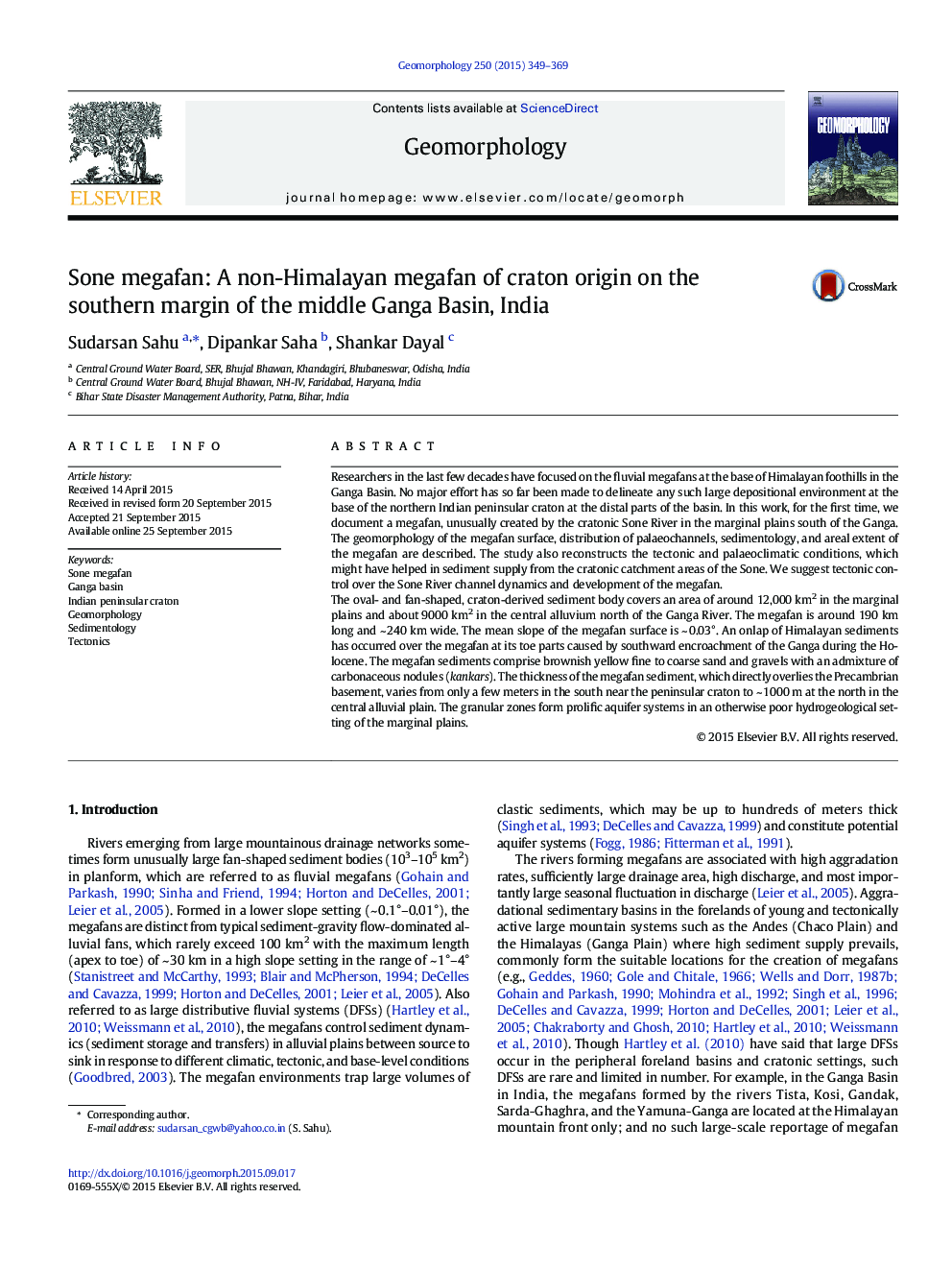| Article ID | Journal | Published Year | Pages | File Type |
|---|---|---|---|---|
| 6431819 | Geomorphology | 2015 | 21 Pages |
â¢First time reporting in detail the Sone megafan formed by the cratonic Sone Riverâ¢With sediment from craton, it is formed in the peripheral parts of Ganga Basin.â¢Covers ~ 19,000 km2 in Middle Ganga Plain (~ 190 km long, ~ 240 km wide)â¢With few meters to ~ 1000 m thick Quaternary alluvium, surface slopes at ~ 0.03°.â¢Role of climate and stronger tectonics regimes suggested as forcing factors.
Researchers in the last few decades have focused on the fluvial megafans at the base of Himalayan foothills in the Ganga Basin. No major effort has so far been made to delineate any such large depositional environment at the base of the northern Indian peninsular craton at the distal parts of the basin. In this work, for the first time, we document a megafan, unusually created by the cratonic Sone River in the marginal plains south of the Ganga. The geomorphology of the megafan surface, distribution of palaeochannels, sedimentology, and areal extent of the megafan are described. The study also reconstructs the tectonic and palaeoclimatic conditions, which might have helped in sediment supply from the cratonic catchment areas of the Sone. We suggest tectonic control over the Sone River channel dynamics and development of the megafan.The oval- and fan-shaped, craton-derived sediment body covers an area of around 12,000 km2 in the marginal plains and about 9000 km2 in the central alluvium north of the Ganga River. The megafan is around 190 km long and ~ 240 km wide. The mean slope of the megafan surface is ~ 0.03°. An onlap of Himalayan sediments has occurred over the megafan at its toe parts caused by southward encroachment of the Ganga during the Holocene. The megafan sediments comprise brownish yellow fine to coarse sand and gravels with an admixture of carbonaceous nodules (kankars). The thickness of the megafan sediment, which directly overlies the Precambrian basement, varies from only a few meters in the south near the peninsular craton to ~ 1000 m at the north in the central alluvial plain. The granular zones form prolific aquifer systems in an otherwise poor hydrogeological setting of the marginal plains.
